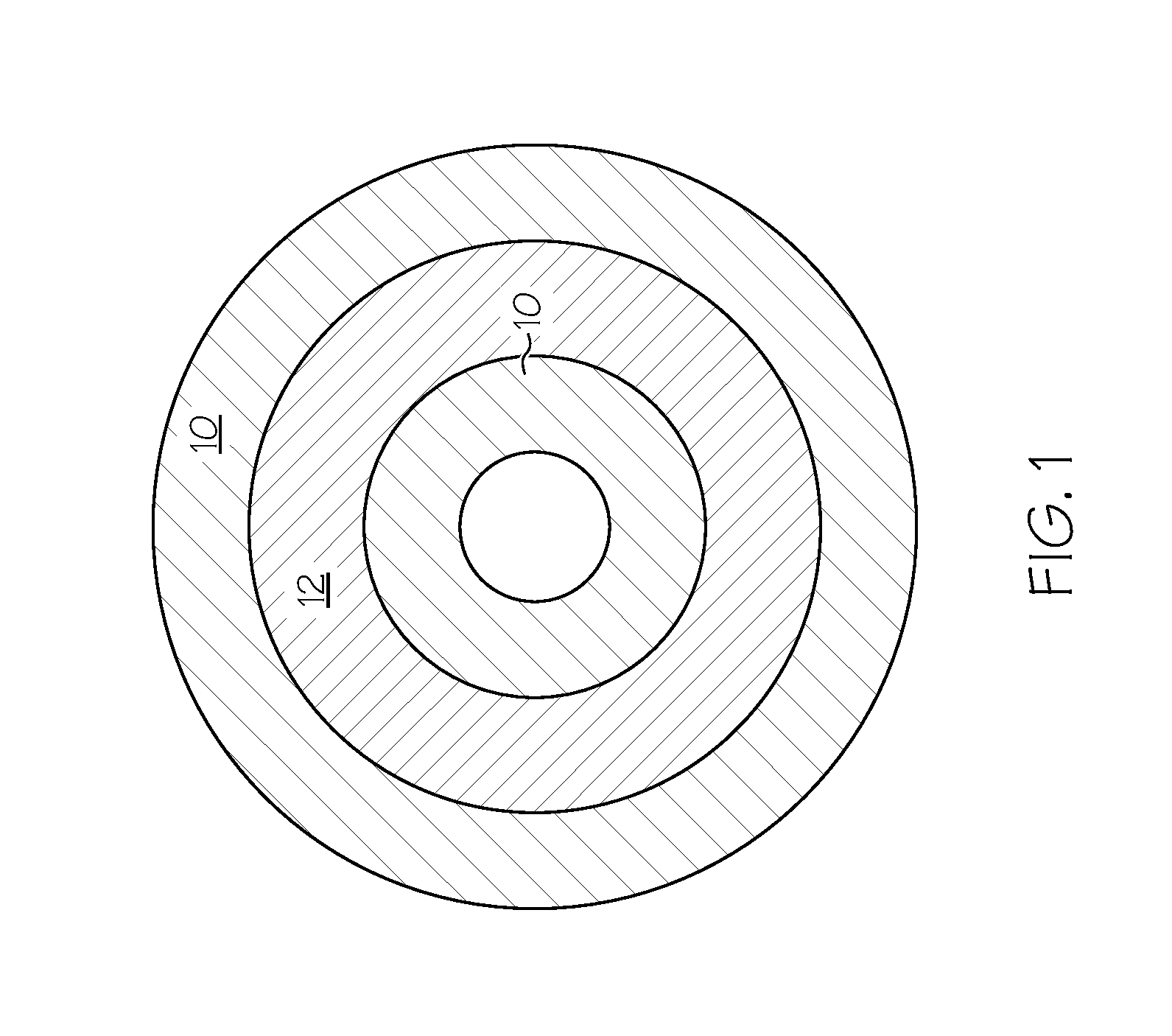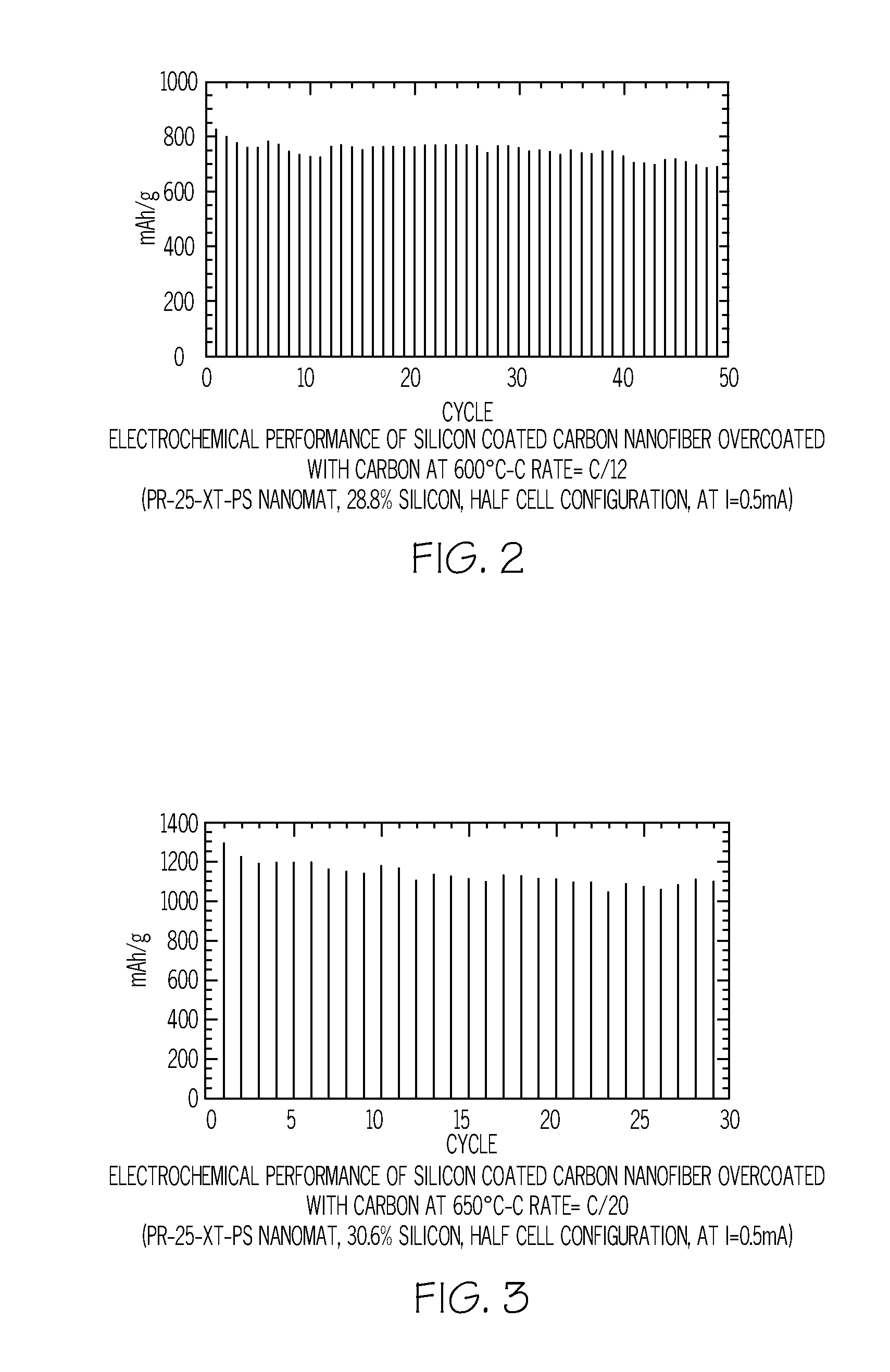Method of depositing silicon on carbon nanomaterials
a carbon nanomaterial and carbon nanotechnology, applied in the field of silicon depositing on carbon nanomaterials, can solve the problems of high lifetime cost for consumers, short driving range for most automobile owners, and rapid loss of capacity of silicon-based anodes, etc., and achieve the effect of increasing the surface area of carbon nanomaterials and increasing the pore volume of carbon nanomaterials
- Summary
- Abstract
- Description
- Claims
- Application Information
AI Technical Summary
Benefits of technology
Problems solved by technology
Method used
Image
Examples
example 1
[0065]Samples of carbon nanofiber powder were formed by de-bulking carbon nanofibers (PR-25-XT-PS from Applied Sciences, Inc.) into a pelletized form using wet mixing or powder processing methods. The powder samples were exposed to carbon dioxide at a temperature of about 950° C. for 2 hours at a carbon dioxide flow rate of 2 liters per minute (LPM) to increase the surface area and porosity prior to coating with silicon.
[0066]Table 1 below shows the effect of this form of oxidation under various conditions on the surface area of the carbon nanofibers prior to coating with silicon.
TABLE 1Effect of carbon dioxide oxidation on the surface of carbon nanofibersSurface areaPore volumeAvg. Pore diameter(m2 / g)(cm3 / g)(nm)Carbon nanofiber680.148.2powder (baseline)Carbon nanofiber1810.286.1powder (CO2etched)
The sample of carbon dioxide treated nanofiber powder was then coated with silicon by exposure to silane gas at 500° C. for 10 minutes where the silane flow rate was 2 LPM. The silicon coat...
example 2
[0067]To study the effect of oxidation of the silicon coating on electrochemical performance, several strips of carbon nanofiber (CNF) veil samples obtained from Applied Sciences, Inc. were coated with silicon by exposure to silane gas at 500° C. for 15 minutes and split into two groups. One group was tested as-is while the other group received an oxidation treatment in air at 200° C. for 4 hours. The electrochemical performance of the two groups was evaluated in a coin half-cell configuration. The oxidized sample showed a capacity retention of 74% between cycles 2 to 51, which was an improvement over the non-oxidized sample, which showed a capacity retention of 62%.
example 3
[0068]A nanomat comprised of carbon nanofibers from Applied Sciences, Inc. was coated with silicon by exposure to silane gas at a temperature of 500° C. for 2 minutes and was then coated on its exterior with a 5-10 nm thick layer of carbon by magnetron sputtering over the silicon-coated surface. The sample retained close to 80% of its initial capacity in about 200 cycles.
PUM
| Property | Measurement | Unit |
|---|---|---|
| Temperature | aaaaa | aaaaa |
| Temperature | aaaaa | aaaaa |
| Temperature | aaaaa | aaaaa |
Abstract
Description
Claims
Application Information
 Login to View More
Login to View More - R&D
- Intellectual Property
- Life Sciences
- Materials
- Tech Scout
- Unparalleled Data Quality
- Higher Quality Content
- 60% Fewer Hallucinations
Browse by: Latest US Patents, China's latest patents, Technical Efficacy Thesaurus, Application Domain, Technology Topic, Popular Technical Reports.
© 2025 PatSnap. All rights reserved.Legal|Privacy policy|Modern Slavery Act Transparency Statement|Sitemap|About US| Contact US: help@patsnap.com



